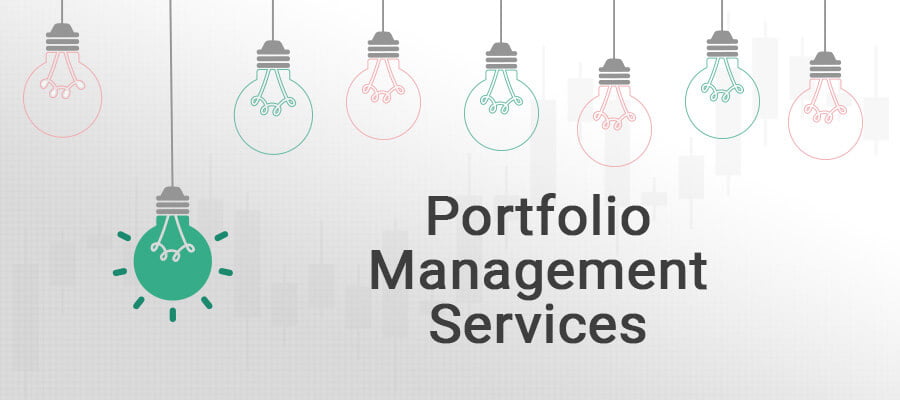Portfolio Management Services (PMS) is a phrase or a word that you would have heard from your friends and family.
In a world full of uncertainty, we all desire to lead stable lives with sufficient income to cover our daily expenses as well as long-term financial goals. For a beginner, investing might be challenging. Time is required to understand the market, and not all investors have that. To avoid losing money or having your funds locked up for an extended period due to a bad investment, you will need assistance and guidance.
These investors can look forward to investing in a professional manner either through a mutual fund or avail of Portfolio Management Services. In this post, we will talk about what a PMS is and how it is useful to you. But before that, let’s first understand what is a portfolio and why we need one.
What is a Portfolio?
One of the most basic ideas in business and investing is a portfolio. It is a collection of assets that include stocks, bonds, cash and cash equivalents, equity projects, life insurance, real estate, and other assets that are generally owned by a person or an entity depending on the income or investment. It also includes closed-end funds and exchange-traded funds (ETFs).
What is Portfolio Management Service (PMS)?
To assist investors in achieving their financial goals while keeping the desired degree of risk, the Portfolio Management Service (PMS) provides a collection of bespoke investment solutions. The PMS manager makes sure that the investment requirements match the risk level of the individual investor. The service is personalized to the investor’s output goals as well as his or her aptitude and ability to accept risk. Prior to executing the ideal portfolio, PMS takes the time horizon, tax consequences, liquidity, asset allocation etc. into account.

For this, PMS creates a policy known as an Investment Policy Statement (IPS), which uses information such as the client’s needs, prior investment performance, and financial situation to analyze and provide a clear answer for investing in the proper area.
Types of Portfolio Management Services
- Active Portfolio Management: To provide greater and better returns, this type aims to outperform a market index like the Nifty or the BSE. The manager will be free to plan, select the necessary securities, and actively buy and sell assets based on institutional data to surpass the index and spread the portfolio across investments to reduce potential losses. The method, though, involves a higher risk to get an extra return. Investors that can handle more risk and want bigger capital gains should choose this option.
- Passive Portfolio Management: It involves investing in comparable securities with comparable weights to mimic the behaviour of a market index. The manager duplicates and follows the stock market index portfolio to give investors returns that are consistent with the index. Compared to active management, transaction costs from the turnover of securities are low since portfolio volatility is kept to a minimum than the tracking index. It is suitable for long-term investments and security consolidation in one place.
- Discretionary Portfolio Management: The portfolio manager has total control over the portfolio and is free to use any strategy created for groups falling into similar categories to accomplish investment goals acceptable to the IPS. This legitimises a higher commission because it calls for more participation in decision-making. For customers who are time and investment challenged, this is the best choice.
- Non-discretionary Portfolio Management: The investor will choose the recommendation and timing; the PMS will only make suggestions for investments. The investor could thus gain financial planner knowledge through this use of PMS without giving up investment control because they make the final decision rather than the fund manager.
Choosing the best Portfolio Management Services
- Seek out a portfolio management service that constructs a portfolio optimised your own needs
- Pick a service that offers consistent real-time insights, as well as online portfolio access.
- Examine customer feedback and reviews to choose the best choice from the options that have been shortlisted.
- Finally, pick a service that offers ongoing customer support and helps you with audited reports and income tax calculations for filing returns.
Pros and Cons of PMS
Pros |
Cons |
| Provides transparency of the investments. | Minimum investment amount of Rs. 50 lacs. |
| Discretion over when to buy, sell and invest. | High fees for the services provided. |
| Portfolio monitoring is made simpler. | Risk of over-diversification while trying to invest in large funds. |
| Liquidity options to divest funds. | No downside protection in a market crash. |
| Flexibility in portfolio management. | Accessible to a limited audience. |
Conclusion
Due to its emphasis on creating investment strategies to create a customized portfolio that yields the best returns, Portfolio management services investment is a sustainable option. Because this investment option is carefully guided and monitored by experienced managers, investors can place their cash or equities with professional financial advisors. It is essential to pick a strategy that is relevant to your own investing style rather than blindly investing in something that may not be relevant to you.






